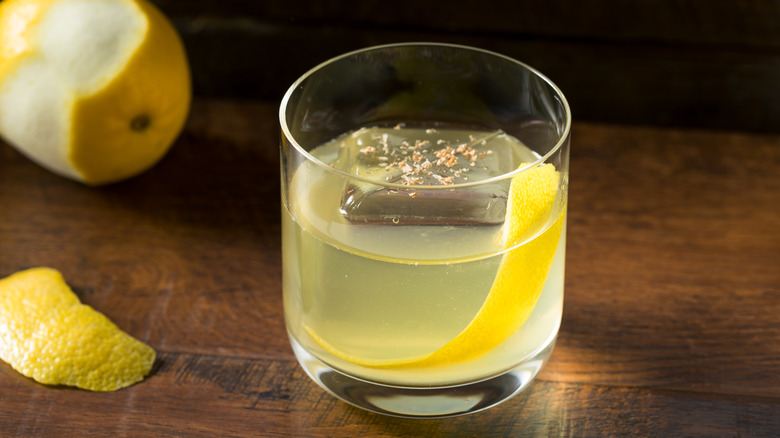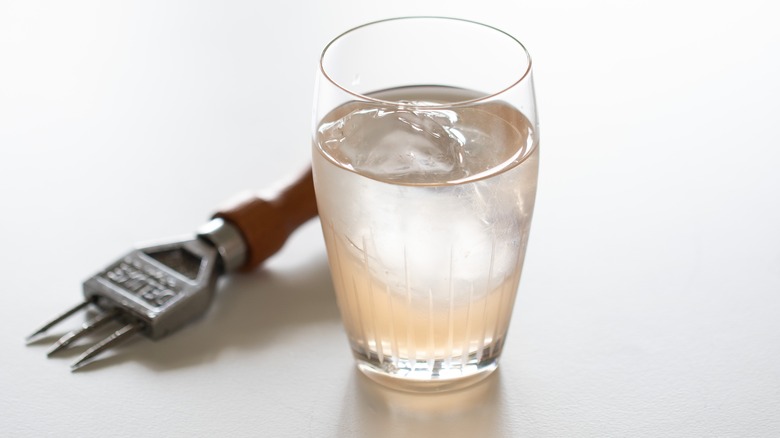The Cocktail That Rocked 18th Century British High Society
This drink was so popular that 17th-century playwright Aphra Behn incorporated it into her plays. It was also the bevvie of choice at soirées held by members of Britain's high society. It even made its way to colonial America, where Benjamin Franklin concocted his own recipe, which he mailed to a friend in 1763. The beverage? Milk punch (via Edible Vermont).
Don't confuse the 18th century milk punch with the more familiar New Orleans style one served up at places like the legendary French Quarter eatery Galatoire's. The New Orleans version shakes together milk, bourbon, vanilla, and simple syrup to create an adult version of a milk shake (sans ice cream). The 18th century milk punch, also known as clarified milk punch, is a more complex concoction (via Atlas Obscura).
Difford's Guide explains that the origin of the word punch is contested. Some believe it stems from the Hindi word meaning five, since there are five ingredients in the traditional recipe: citrus, sugar, water, spice, and spirits. However, David Wondrich, author of the book "Punch," disputes that lore, told Difford's Guide that its name likely stems from a rum barrel called a puncheon. Not in dispute is its origins in India. When British sailors on the East India trade route ran out of wine on ships, they concocted their own using the liquor plentiful in East and South Asia.
The 18th century drink rediscovered by modern mixologists
When did milk get added to the libation? Atlas Obscura points to the posset, a drink imbibed as far back as the middle ages, which mixed cream and wine with sugar and spices like nutmeg and cinnamon. The wine was added to the warmed dairy, causing it to curdle. The curds floated to the top, and they were eaten.
Milk punch, however, removes the curds, leaving behind a clear drink with a velvety texture, making it shelf stable, important for food and drink before refrigeration (via Punch). Once the milk solids are removed, the drink can stand the test of time and be stored like wine. In fact, upon his death, several bottles were found in Charles Dickens' cellar (via Atlas Obscura).
Seven Fifty breaks down the chemical process that makes milk punch so drinkable: The milk proteins (i.e, the strained-out curds) bind to the molecules that produce the bitter and astringent flavors in spirits, so the flavor notes that remain are more floral, spicy, and citrusy. The whey proteins left behind account for milk punch's buttery texture.
Mixologist Eamon Rockey, the first to bottle milk punch for sale in over a century, is credited with the beverage's resurgence (via Fortune). More and more modern mixologists are working the 18th-century cocktail onto contemporary bar menus (via Tales of the Cocktail).
Consider popping open a bottle at your next "Bridgerton" watch party.

